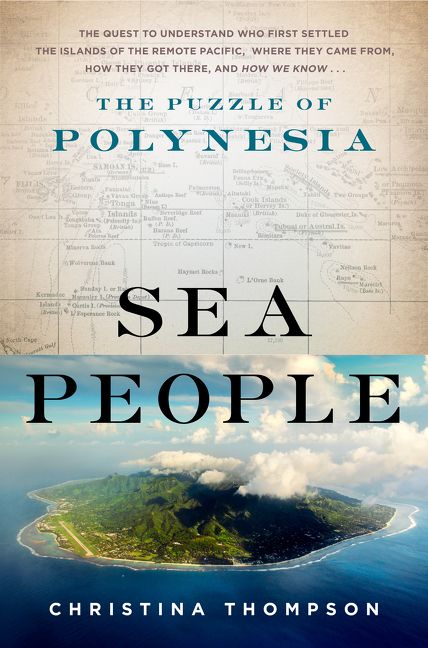
The mystery of Polynesian culture has baffled scientists, explorers and linguists for centuries. They are a people with shared traits scattered across tiny dots of land in a sea of ten million square miles. But where did they come from, and how did they get there? More importantly, how did they know to look there?
Thompson uses the historical timeline of European contact with Polynesian people as a guide. In it, she explores each group’s story and unpacks what their impressions mean, with the benefit of hindsight. She also puts them in a wider context of their field of study.
For example, Captain Cook met a Tahitian named Tupaia who joined their expedition. While they sailed, they asked him about his knowledge of other lands and even to draw maps. Their methods were not as impartial as we might hope for today, but they give great insight into how the Polynesians think about travel.
European charts, such as those that Tupaia was introduced to by Cook, depicted the worked in terms of conceptual systems that were entirely alien to the Tahitians. Position, distance, and direction were defined in terms of a mathematical scheme of measurement based on the size and shape of the earth. The perspective was not that of a participant on the ground but of an observer high in the sky. …
In Tahiti, by contrast, there were few if any systems of absolute measurement. Distances were measures in time, and even then it was not in terms of a universal standard but time as experienced by a subject under certain conditions. … Although Tahitians did use a fixed directional system at sea, based on sun, stars and winds, on land they employed a relative system based on the speaker’s position. ~Pg. 95
Thompson also explores the oral traditions of Polynesia. Though not having a written record can be frustrating for some researchers, it does provide insight in to how the culture thought and shared ideas. They passed on centuries of knowledge in what seem like simple stories.
Furthermore, linguists attempted to build a potential timeline of the spread of Polynesian culture based on the evolution of the language. What words changed in their new homes? What words remain unaltered? Is there a clue in their origin in their words?
So too do the adventurers try to recreate possible migrations. Building boats, relying on currents and winds, navigating by stars, they’ve tried to show their theories are plausible.
These glimpses give us clues as to how Polynesians might have reached remote islands.
Christina Thompson does an excellent job of bringing together history and research of all kinds into focus for the interested by casual reader. One does not need to be an anthropologist to understand of enjoy Sea People.
My rating: [xyz-ihs snippet=”4-and-half-stars”]
Thank you to Harper Books for the advanced reading copy.
Hardcover: 384 pages
Publisher: Harper (March 12, 2019)
Language: English
ISBN-10: 0062060872
ISBN-13: 978-0062060877
Product Dimensions: 6 x 1.2 x 9 inches
